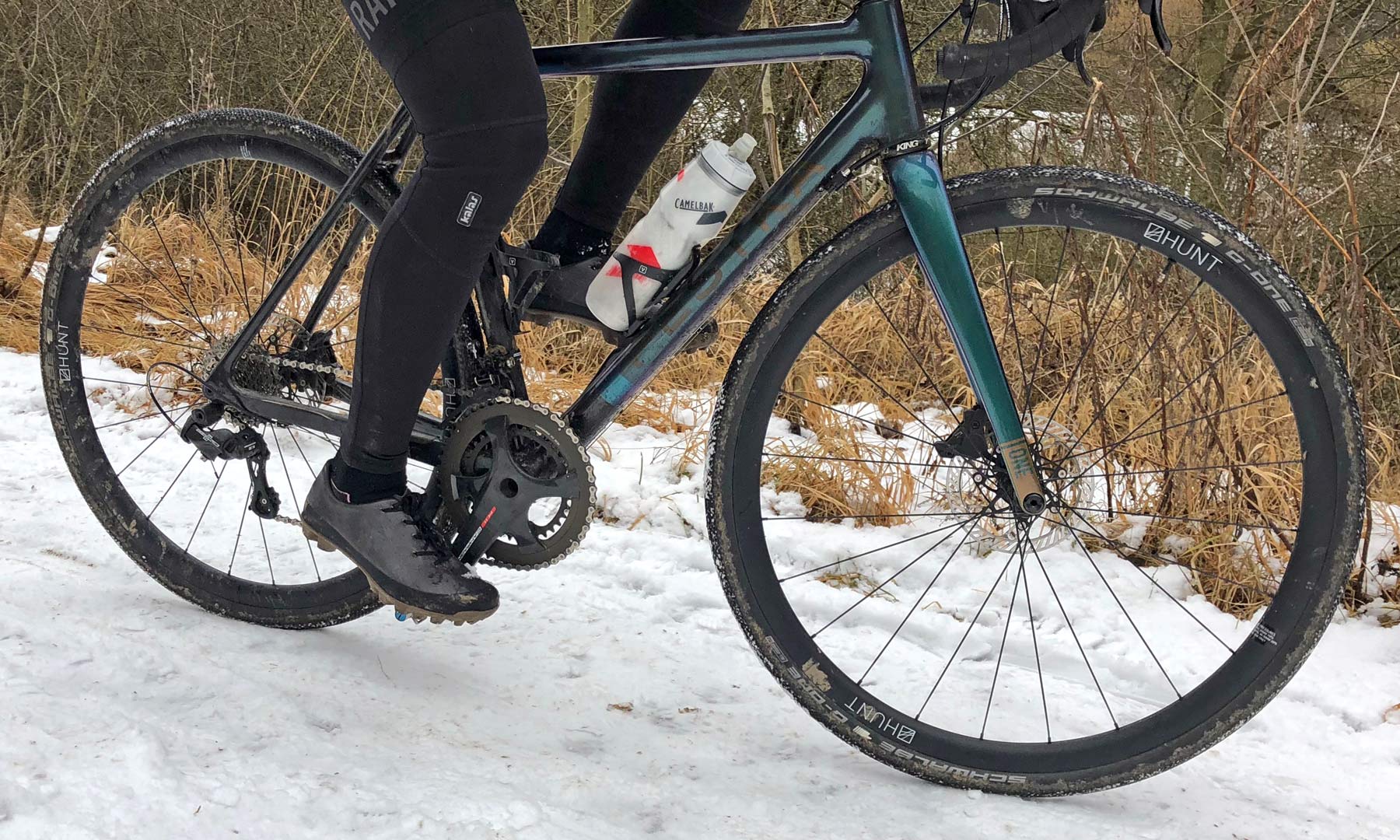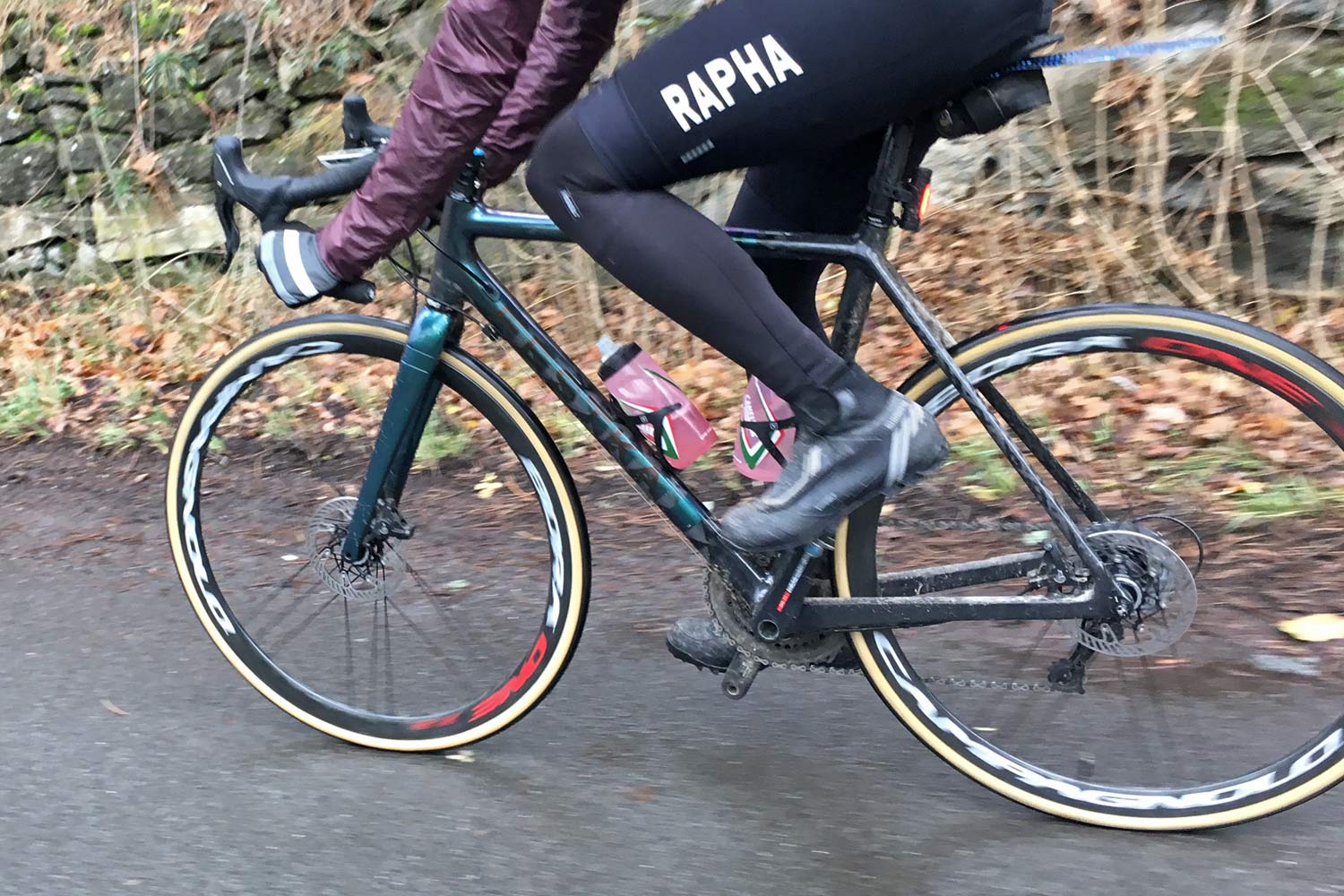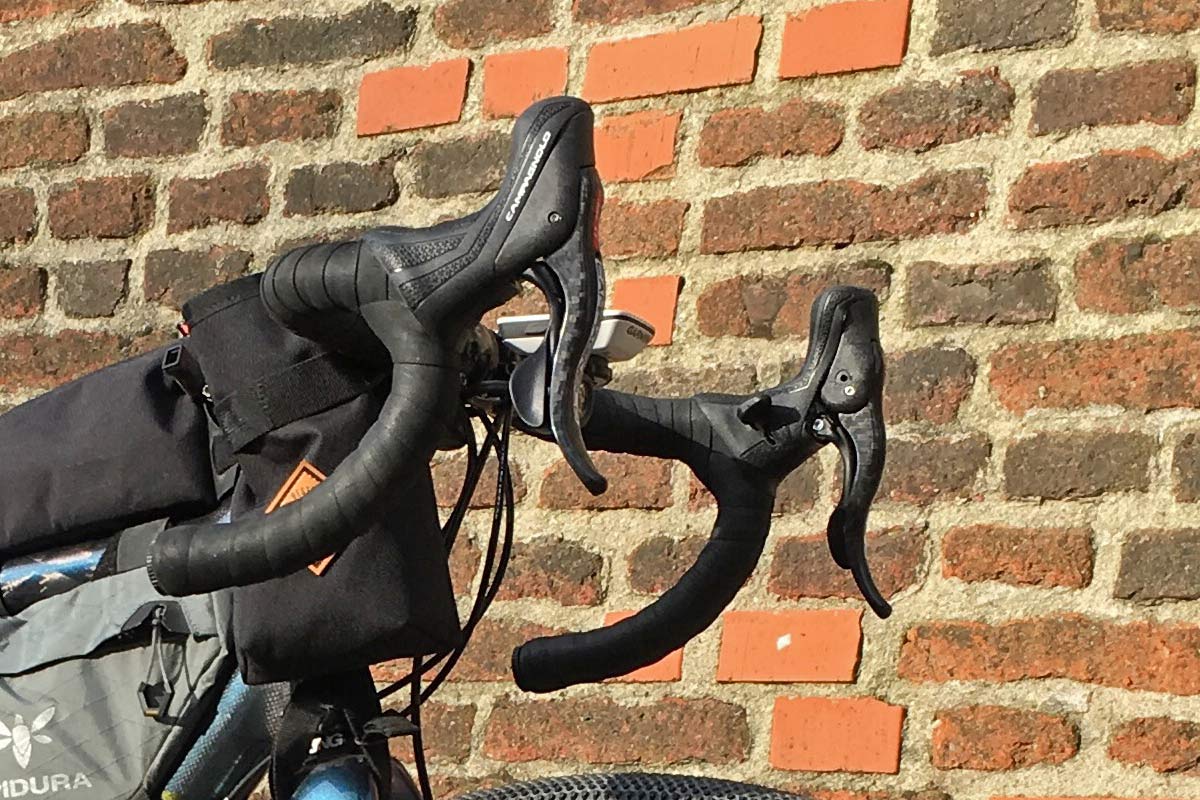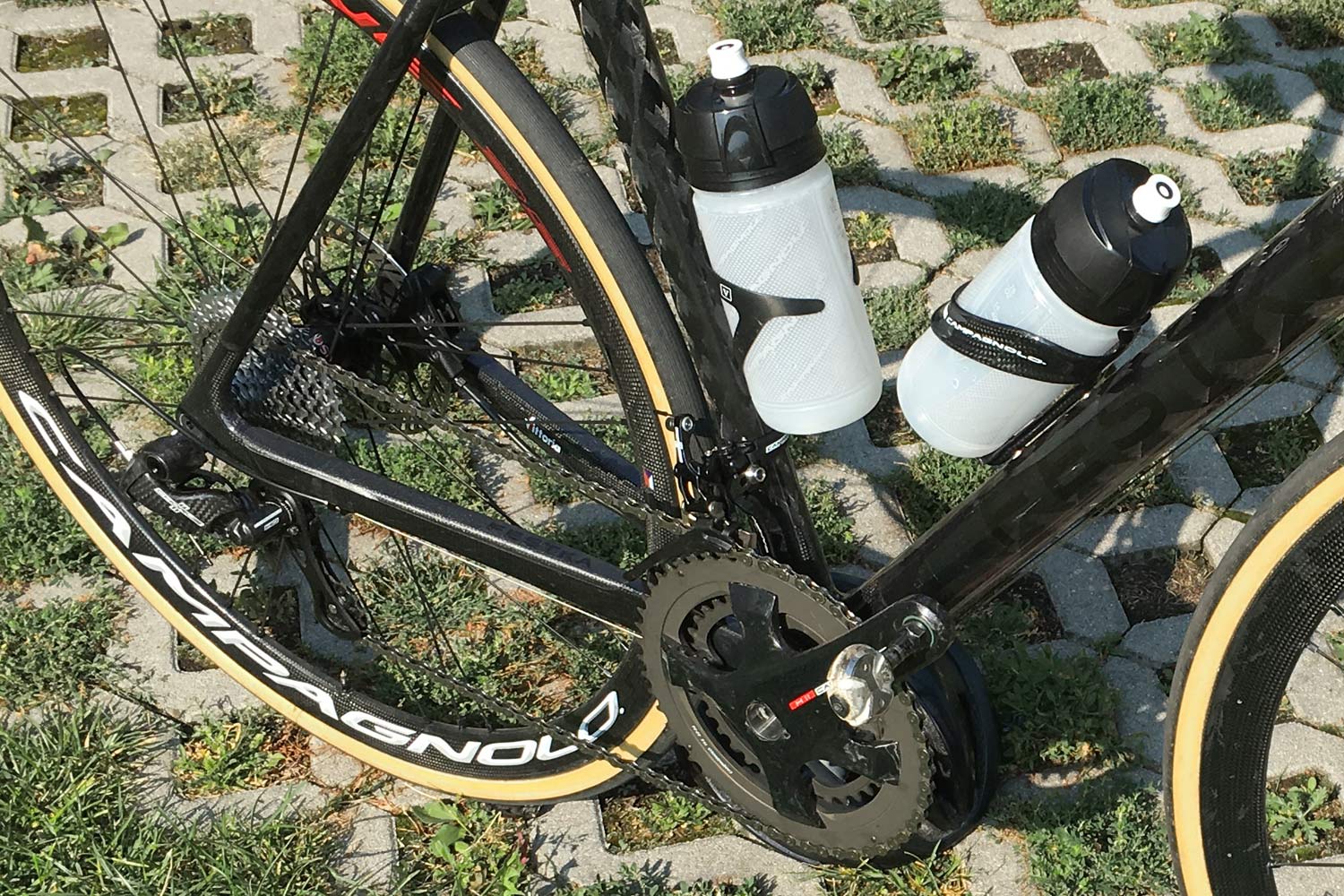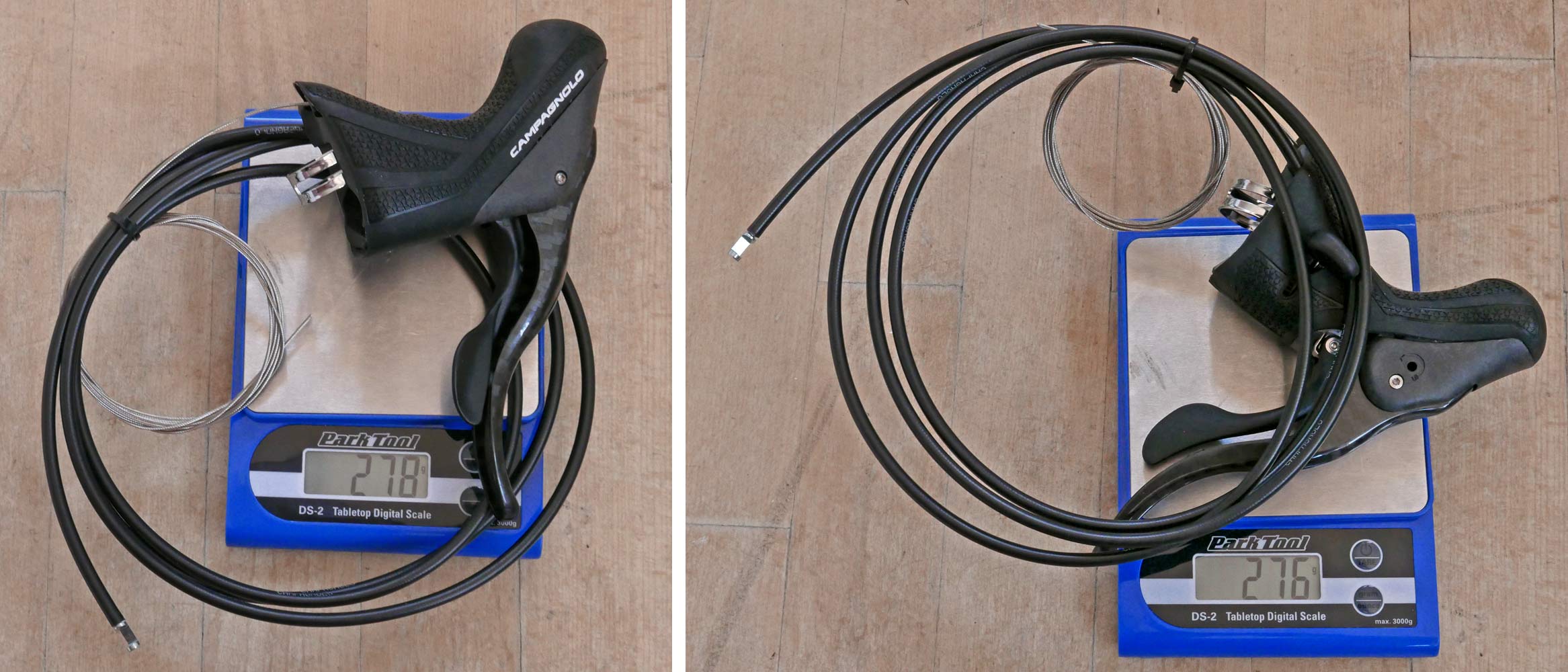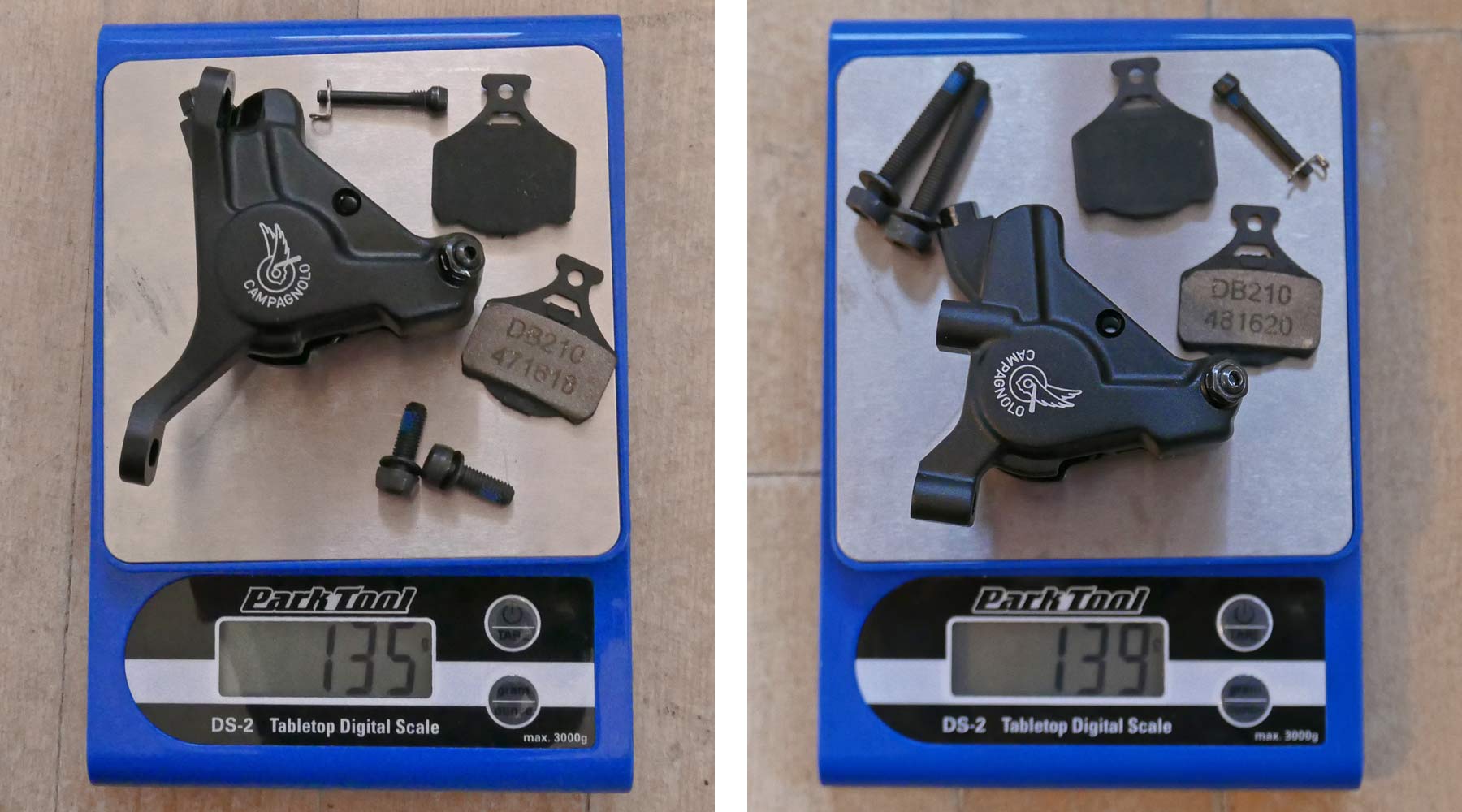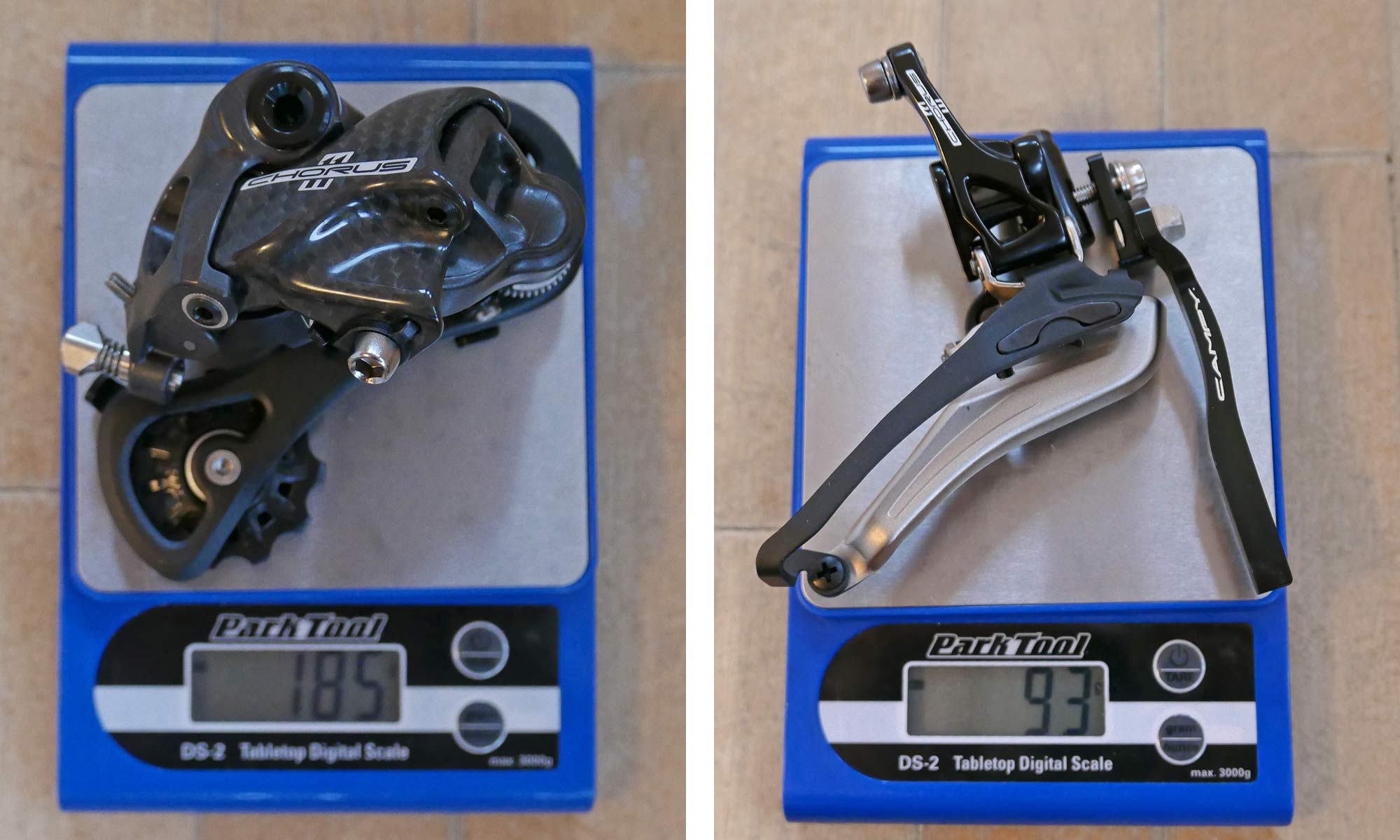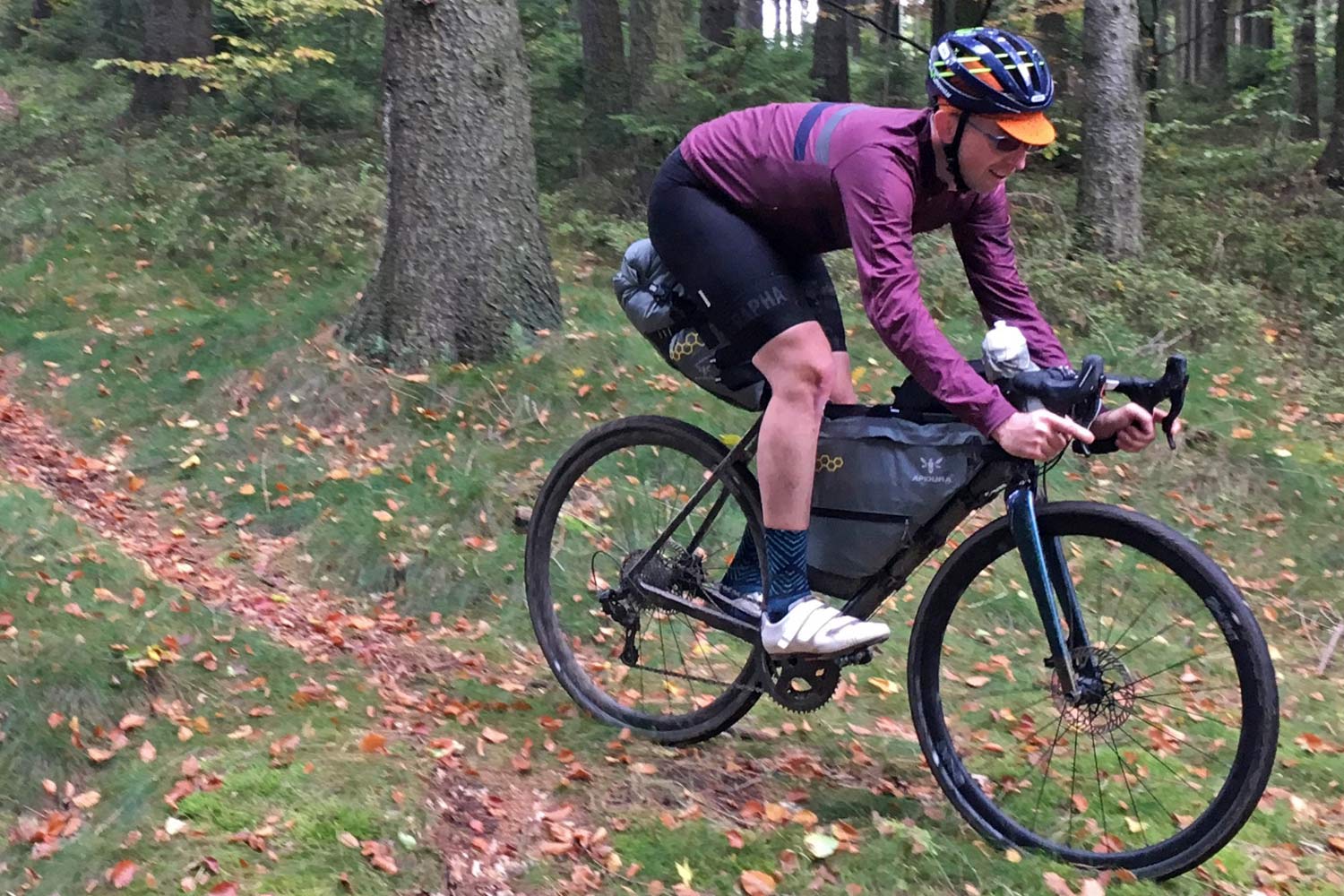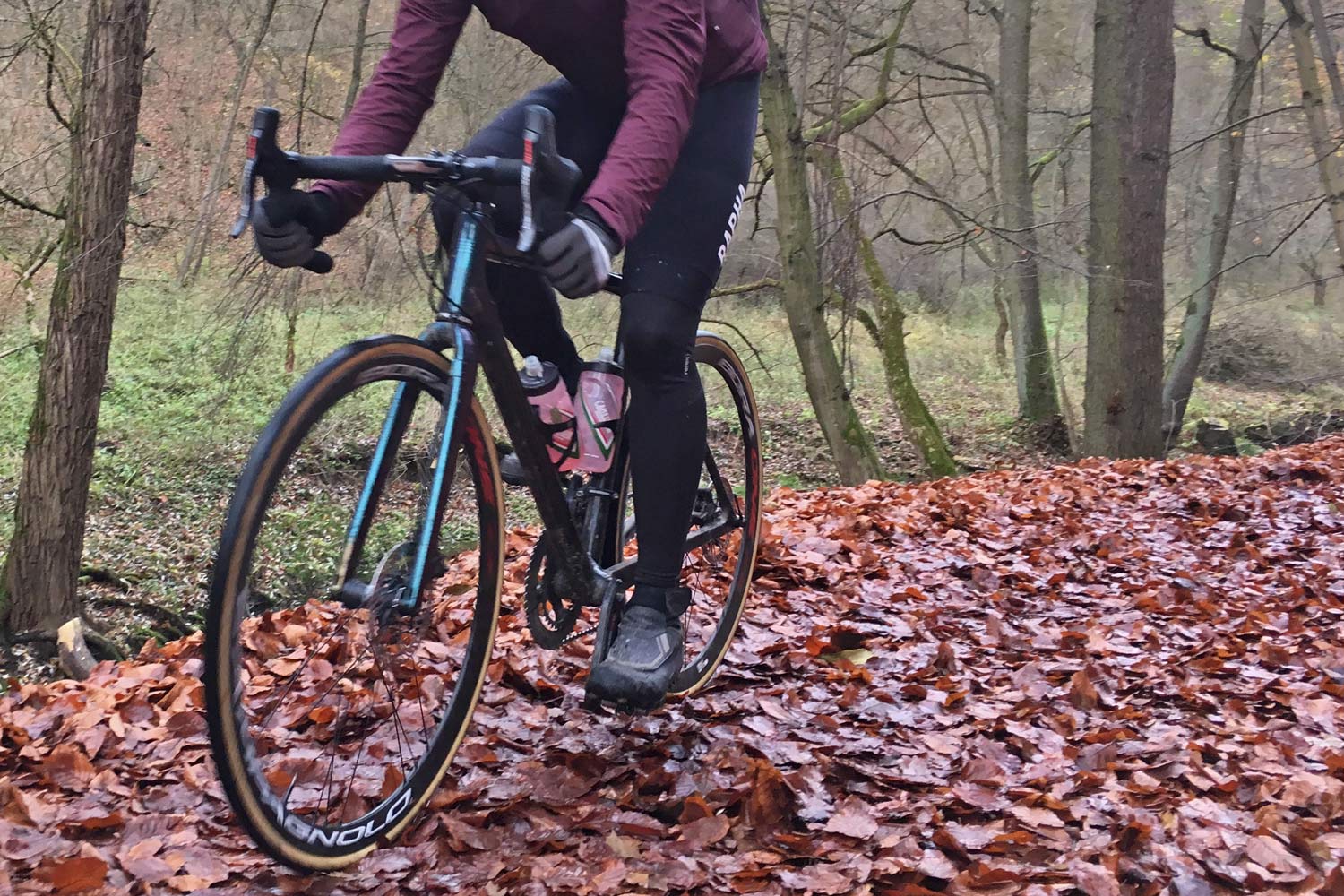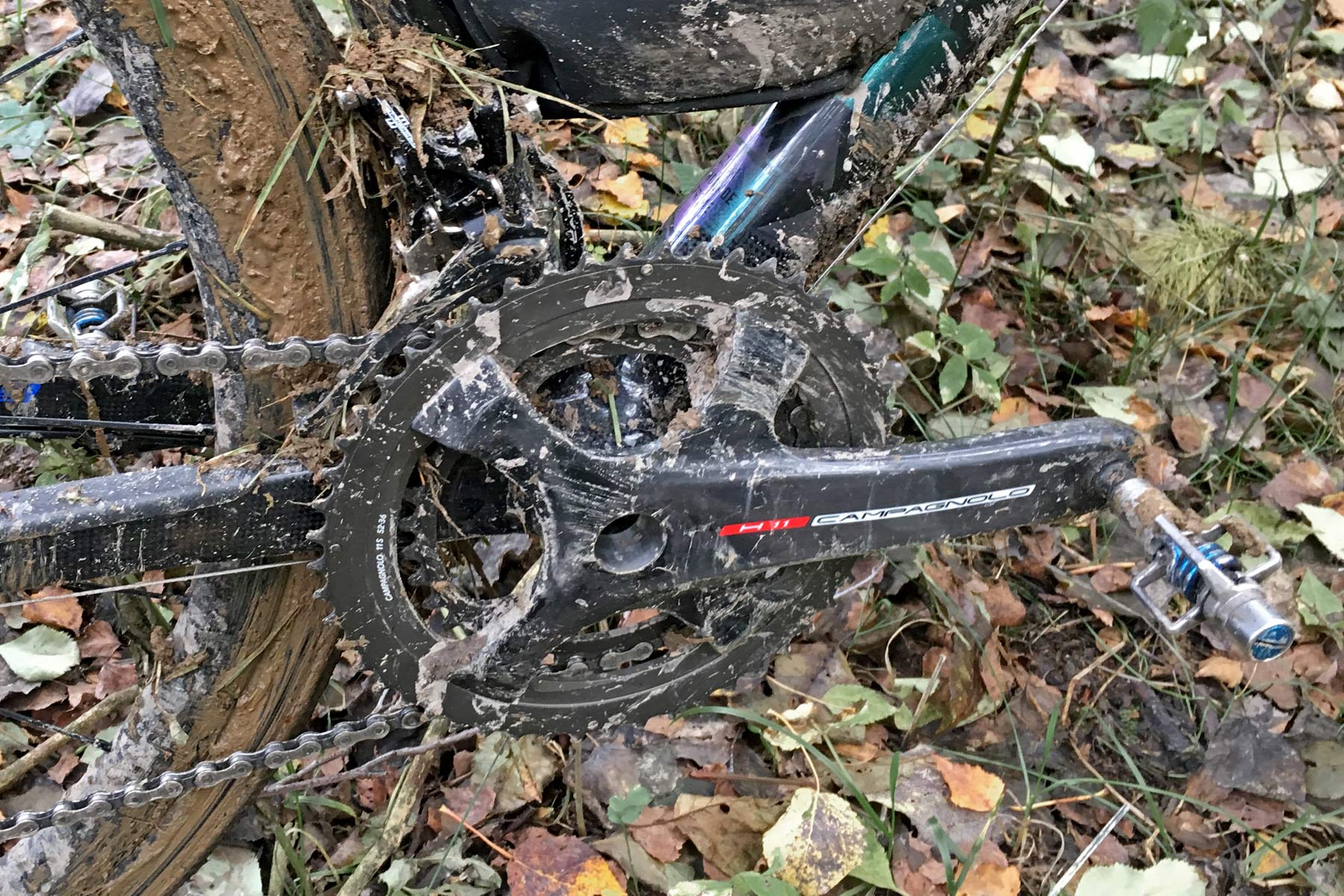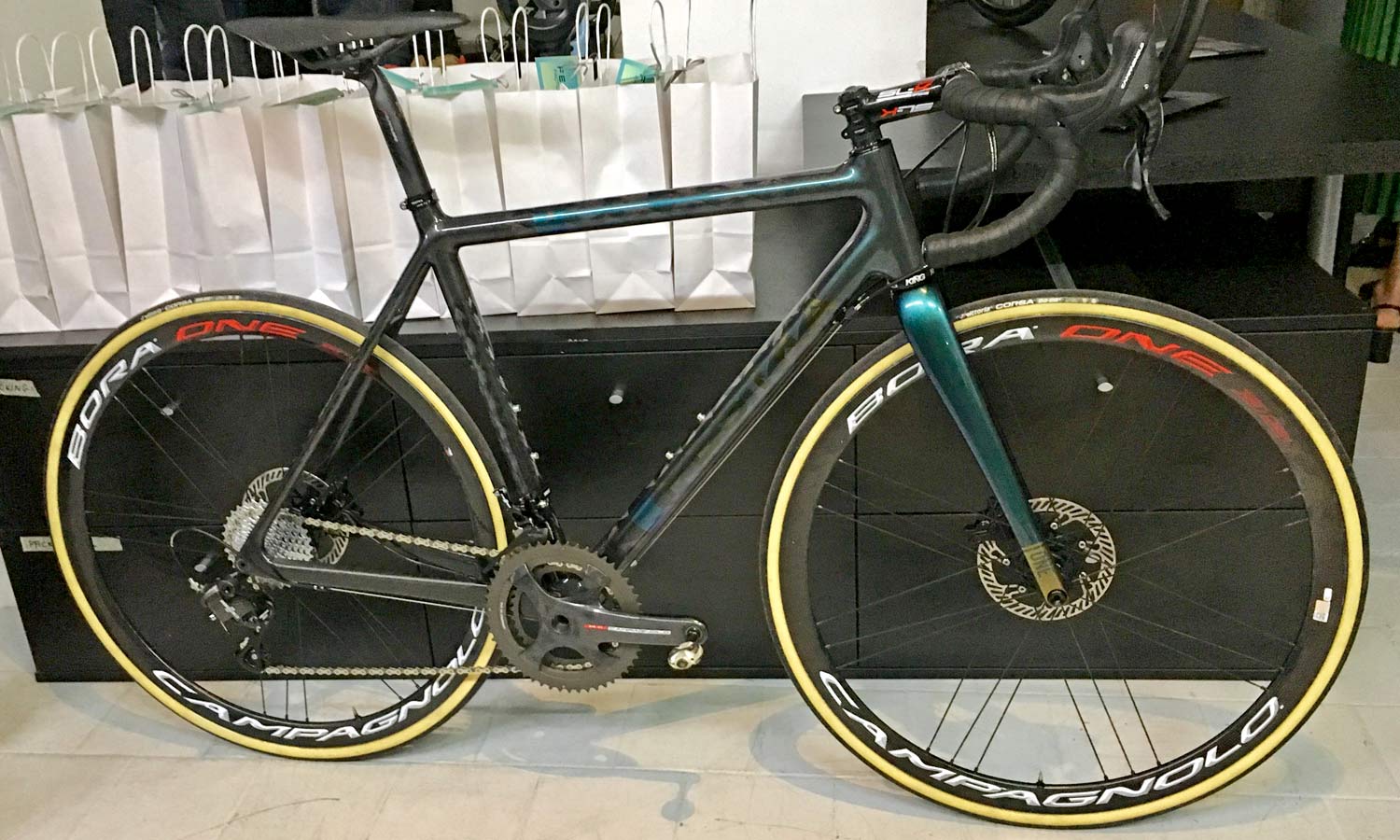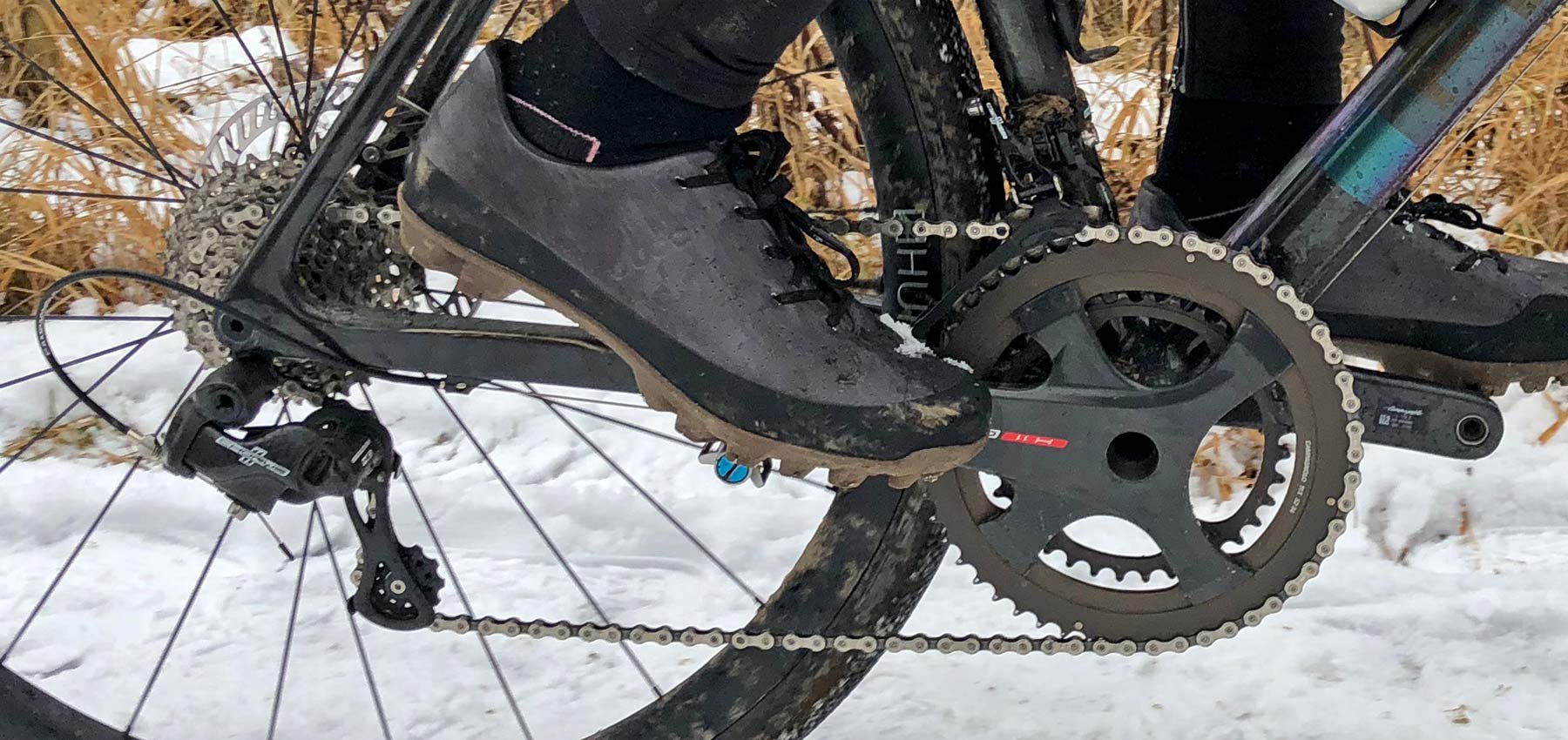Last summer Campagnolo finally came through with their long-rumored H11 disc brake project. And while a bit late to the party, the brakes themselves work as well or better than every other hydraulic road disc brake group on the market. Since the fall we’ve been riding a Chorus carbon gruppo with the H11 components and a not-talked-about longer medium cage rear derailleur for a fast gravel-friendly setup that has delivered excellent performance.
Campagnolo H11 mechanical, road bike disc brakes
What Campagnolo did where other hydraulic road disc brake competitors like Shimano, SRAM & even Rotor didn’t, was to deliver their new disc brake technology across a wide range of component group levels at its debut. And then they actually delivered the goods to consumers in a short amount of time. Following up on a review of SRAM Red’s group, I had personally been looking for a mechanical shift/hydraulic disc groupset with improved ergonomics for an all-road bike that would see regular asphalt, gravel and dirt road riding.
The mechanical Chorus version of Campy’s new disc brake series seemed like a perfect fit in a premium spec’ed group, sharing the same H11 levers that Record & Super Record would use, plus the same crankset. Plus, when I started looking at the detailed specs for the new group I realized that Campagnolo was now offering each of top mechanical rear derailleurs with a mid-length cage that would make them work with Campy’s newest 11-32 cassette.
Tech Details & Actual Weights
Adding disc brakes to a carbon road bike build still means adding a bit of weight overall. But since the heavier and more complicated components of the H11 group are shared with the two higher-spec component groups of Record & Super Record, opting for Chorus looked by far like the best value of grams per Euro.
Our test groupset can be essentially split into two categories – H11 and Chorus mechanical, and does include a few components heavier than Campy’s base measurements in the interest of stronger braking, a wider gear range, and improved chain retention.
H11 hydraulic disc brakes
Everything brake related is H11, and includes a pair of H11 brake/shifters with a carbon lever blade, a pair of flat mount disc brake calipers & their hydraulic hoses (left/front 411g, right/rear 417g), two 160mm H11 rotors (119g each), and a H11 carbon crankset (665g). We detailed the tech features of the levers at their launch, and besides using the same slim profile and comfortable ergonomics of rim brake Campy levers, the H11 Ergopower levers’ stand-out feature is unique independent reach adjust and a two-position leverage-adjust at the lever.
The H11 crankset’s key feature is a slightly wider chain line to accommodate the wider rear hub spacing of the road 12x142mm standard (much like you see with Boost cranks, but to a lesser degree. Our crankset features mid-compact 53/36 gearing that seemed a good compromise for a light road bike build that would still see plenty of time off the pavement.
A couple notes on Campy’s H11 calipers. The flat mount calipers are not your typical style that mount with an adapter and can be used for both 140 or 160mm rotors. Instead, on the frame you need a set of bolts of the specific length to match how deep your chainstays are. There can be a couple centimeters difference from a thin steel chainstay to a tall carbon one, but Campy offers a range of bolt options, for what results in a clean install. Also for the rear, you can pick either 140 or 160mm specific calipers and the matching rotors. Up front it is 160mm only. We chose 160mm at both ends for looks and ease of compatibility with the most wheelsets. (Just for reference, we got ahold of a 140mm rotor to see the difference. At 99g you could save just a real 20g on the rotor & 7g on the slightly smaller caliper.)
Chorus 2×11 mechanical drivetrain
The Chorus components are the medium cage mechanical rear derailleur (185g), which Campagnolo rates for up to 32T cogs, plus a standard mechanical front derailleur with an integrated CSD chain catcher (93g), a Chorus C11 chain (257g), a non-series Ultra-Torque press fit bottom bracket (40g), and the non-series C11 steel 11-32T cassette (329g).
The mid-cage rear derailleur was the standout here. Campy introduced lower end Potenza & Centaur groupsets with a 11-32 cassette options to appeal to more beginner riders, but they never really announced that the Chorus, Record & Super Record mechanical derailleurs were getting the bigger gear range option as well. Sure the steel 11-32 cassette is about 100g heavier than a smaller 11-27 Chorus or almost 130g more than a ti Super Record cassette, but it brings a lot more usable range also to the top-end groupsets.
In the end our actual weights mostly hit close to those quoted by Campagnolo, with a few notable exceptions. Our pair of levers were 92g heavier for the pair than claimed (perhaps because the base figure excluded hoses & shift wires? but we even forgot to weigh the housing which would add another 20g or so). In the same avenue our cranks were 37g heavier, although that is probably the result of 172.5 arms and 52/36 rings, not the lightest possible in the range. Calipers again add 44g for the pair, and 44g for the pair of rotors. (Looks like the group figures use two of the lighter, smaller rotor, even though that’s not a possible build.) All the overweight items are H11, which is curious since these components at the same weight are shared for Record & Super Record, where that weight addition will hurt more. For Chorus, it really isn’t a big deal. Our real complete group with the additions for more usability adds up to 2635g – a decent bit more than the total claimed group weight of 2352g (which itself was just 209g more than the rim brake Chorus group claims.)
Riding Impressions
Sure Campagnolo joined the ranks of companies offering hydraulic road disc brakes, but how does it perform? Out of the gates, it looks like Campy really nailed the execution of their disc brake debut. They match the best performance we’ve seen from both the current and previous generations of Shimano’s top Dura-Ace disc brake setups, offering an excellent combination of powerful braking and consistent, reliable modulation. I’ve ridden this group with the bike built to just under 7kg complete climbing with 28mm Vittoria Corsa tubulars glued to 35mm deep Bora One carbon wheels on smooth tarmac and then confidently descending twisty chicanes on the other side, both wet & dry.
Then, I’ve loaded the bike up with a full suite of Apidura bikepacking bags, swapped in a set of Hunt Carbon Aero Disc wheels and 35mm wide tubeless Schwalbe G-One tires, and headed out of multi-day, mixed surface adventures. Riding loaded through slick mud, down wet & rocky descents, and an unfortunately large amount of snow & ice this winter, power and modulation has been on point.
The adjustable leverage ratio and adjustable reach are something that while common on the mountain bike brake side, is slow to find adoption on the road. Reach adjust is simple, and like most riders, I was comfortable leaving in its default position. Changing leverage ratio is a bit more complicated in a compact road lever setup, but this will probably be a big boost for the comfort level of riders switching to road disc brakes. I come from a techy mountain biking background and prefer the more aggressive, higher leverage setting on both front & rear, much like I prefer 1-finger trail braking. I suspect most technical riders would do the same.
But for many roadies making the switch to discs, the lower leverage option has a noticeably calmer feel too it, delivering a bit more modulation. I feel like many new riders to disc brakes will prefer that setting, and it may even be a more appropriate setup for those racing in a mixed peloton with riders still sporting rim brakes.
Campagnolo was proud to talk to us about how they developed a unique brake pad backing material that was going to eliminate squeal. After a couple thousand kilometers riding the H11 disc brakes I can say that they make considerably less noise than road disc brakes I’ve ridden from the other main road groups. With that said, they are in fact not entirely squeal-free. Get them wet, get them dirty, and feather the lever and I could induce some vibration to make the pads get loud. But true enough, it isn’t ever continuous like I have on a couple other bikes at the moment. And perhaps if I take the pads out, carefully clean them and reinstall, it could be a case of that pad backing collecting brake dust and grime over time that have allowed the to vibrate and squeal after having been ridden through the winter.
Some may balk at my assertions that a 52/36 set of chainrings and an 11-32 cassette offers enough range to be a proper gravel or bikepacking bikes. That’s surely a fair argument. I did build this up to be my regular road bike, and that was always going to include at least 28mm tires for the rough roads (and plethora of cobbles) that we have surrounding our EU base in Prague. Relatively smooth dirt & gravel roads were always going to be on the table as well, as I don’t have the self-control to ride past a nice buff dirt road.
When I started riding the bike I just loved the precise & responsive shifting of the Chorus group, and kept riding further and further from the asphalt, until I found myself climbing wet forest roads with an overnight bag hung under my saddle. This bike is so light at 7.2kg rolling, that the slightly taller gear just make me go up the hills a bit faster. For sure the 50/34 option would make more sense for most riders paired to the 11-32 cassette.
If bikepacking or gravel biking is your focus, it would be nice to get a bit more gearing range out of the setup. Campagnolo doesn’t make a set of rings smaller than 50/34 for their proprietary 4-bolt cranks, although TA Specialites does. But anything smaller that 34 and you likely need to look at another crankset option. As for the back, I’m pretty confident that an 11-34 would work perfectly fine as would an 11-36 in many cases. And thanks to the (long overdue) universality of 11 speed road cassette spacing, even though Campagnolo doesn’t offer a larger cassette, there are plenty of other possibilities open to you.
As for me, I’m perfectly happy with my light bike and the mid-compact + 11-32 setup. The disc brake performance is second to none, and the Chorus level spec – while still fancy and imbued with a lot of pretty carbon – isn’t as stratospherically expensive as Campy’s higher offerings. I’ve got a set of tubular road wheels for asphalt and a tubeless gravel wheelset at the ready for when I can sneak out on any type of road ride. And whenever I get back from some tradeshow or bike test somewhere, it’s nice to not worry whether my bike needs to be charged or my brakes need to be adjusted. I just hop on the bike and ride.
